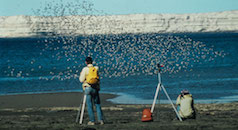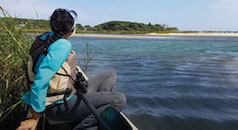More than a third of the Maine species assessed in a newly released Manomet report were determined to have high vulnerability to climate change.
The report, Climate Change and Biodiversity in Maine, defined high vulnerability as species that will experience at least a 66 percent population decline as a result of climate change by 2100.
Researchers looked at 442 species in Maine and found 168 were highly vulnerable. Another 38 percent, or 171 species, fell into the medium range of vulnerability.
The report was a collaborative effort, with scientists from the Maine Natural Areas Program, Maine Dept of Inland Fisheries and Wildlife, The Nature Conservancy, Maine Audubon and U.S. Fish and Wildlife Service running a statistical analysis on vital plant and animal species. The completed paper is the most extensive species assessment in any state to date.
The project sought to draw a more analytical picture of what flora and fauna will be most vulnerable as climate change progresses, and the relationships between these species and the 21 Maine Comprehensive Wildlife Conservation Strategy (CWCS) key habitats. The report is designed to provide information to policymakers and natural resource managers as conservation plans are enacted and assist integration of climate change research into the anticipated update of the Maine CWCS, according to Andy Whitman, director of Manomet’s Sustainable Economies Initiative.
“It’s important to understand the magnitude of the problem,” Whitman said, as states prepare for inevitable shifts in weather patterns that consequently will affect biota.
To date, Maine has succeeded in overall biodiversity conservation with large swaths of habitat preservation, and these conventional methods should remain effective in the long-term, according to Whitman. Problems may arise when looking at more localized habitat shifts, such as beach habitat erosion or dwindling alpine habitat. Where these problems occur, connectivity and corridors will be crucial to allow aquatic and terrestrial species migration.
As atmospheric and water temperatures increase, the report anticipates that Maine will lose species as well as gain others. According to Whitman, the latter will depend upon the wildlife conservation policies enacted by states south of Maine, to ensure adequate land for migration.
“The challenge is not only what is in Maine, but what goes on elsewhere,” Whitman said.
Click here to access the full report.
– Catharina Damrell





 Back to all
Back to all